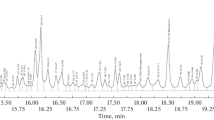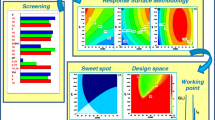Summary
Capillary chromatography is important owing to its separating power, but much of this power is theoretical only because in current practice the separation efficiency theoretically possible, expressed in peaks separated per time unit or per “chromatographic unit” (i.e. k-units) is not yet even partially realized. A dramatic improvement would be possible, if we could learn to master the most important and basic parameter “bo”, the starting peak width, which is a time value. “bo”, the “slope a” (of peak width which increases with time) and the dead time “tm” are the three basic chromatographic parameters, independent of the substances being chromatographed. They build a complete “practically oriented theory”. Application of this theory ensures full optimization of the separation capillary, improvement of the instrument and technique used and the data handling. The theoretical background, experimental results, and the statistically based data handling for testing a capillary and independently, for testing an instrument, are given. Everything discussed here is based on the critical evaluation of the chromatogram and the use of small programmed pocket computers. It is shown that the theoretical or the effective plate number or the plate height data basically and principally cannot describe the separation efficiency in capillary chromatography because of incomplete correlation. Therefore three basic quantities, independent of the substances used and independent of each other are necessary to develop and describe critical quality data for testing and optimization of capillary chromatography. An improved plate height concept is useful but it is better to develop a best possible capillary and describe its true quality. This “real plate height” unit which is free from instrumental influences when measured experimentally, is defined and introduced in capillary chromatography. Dramatic improvements should be possible depending on how we can reach the theoretical limit of bo.
Similar content being viewed by others
Literature
R. E. Kaiser, Gas-Chromatographic (monograph) Geest+Portig KG, Leipzig (1960).
C. Giddings, Analyt. Chem.39, 1027 (1967).
R. P. W. Scott, J. Chrom. Sci.9, 449 (1971).
R. E. Kaiser, Z. analyt. Chem.189, 1 (1962).
R. E. Kaiser, Chromatographia9, 463 (1976).
Trenncassetten in GC, publ. by Inst. of Chromatography, Bad Dürkheim (1976).
R. E. Leaver, T. R. Thomas, Geman edition: Versuchsauswertung — Darstellung und Auswertung Experiment. Ergebnisse in Naturwissenschaft und Technik, Vieweg (1977); original edition: analysis and presentation of experimental results, MacMillan Press Ltd., London (1974).
Author information
Authors and Affiliations
Rights and permissions
About this article
Cite this article
Kaiser, R.E., Rieder, R. Critical and statistically based evaluation, testing, comparison and optimization of capillary chromatography systems, the “ABT-concept” in capillary GC. Chromatographia 10, 455–465 (1977). https://doi.org/10.1007/BF02257360
Issue Date:
DOI: https://doi.org/10.1007/BF02257360




